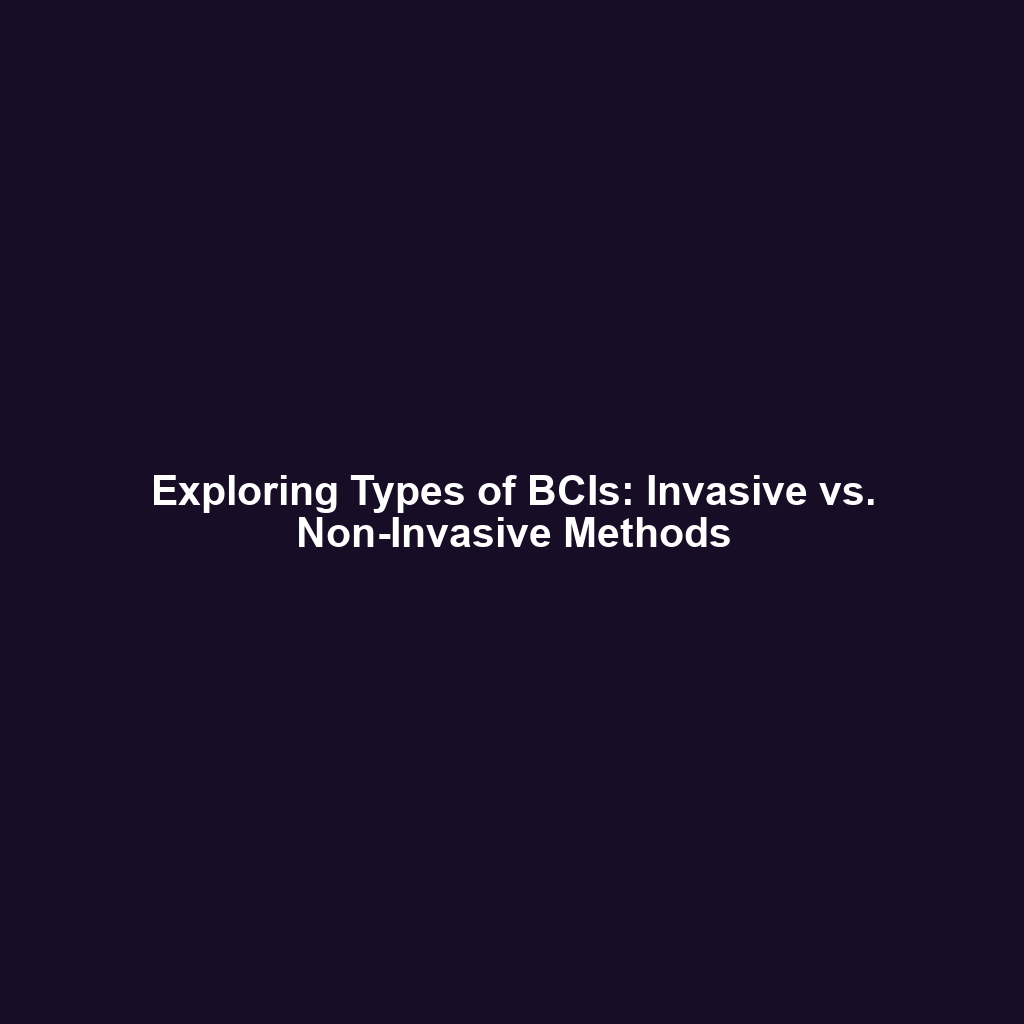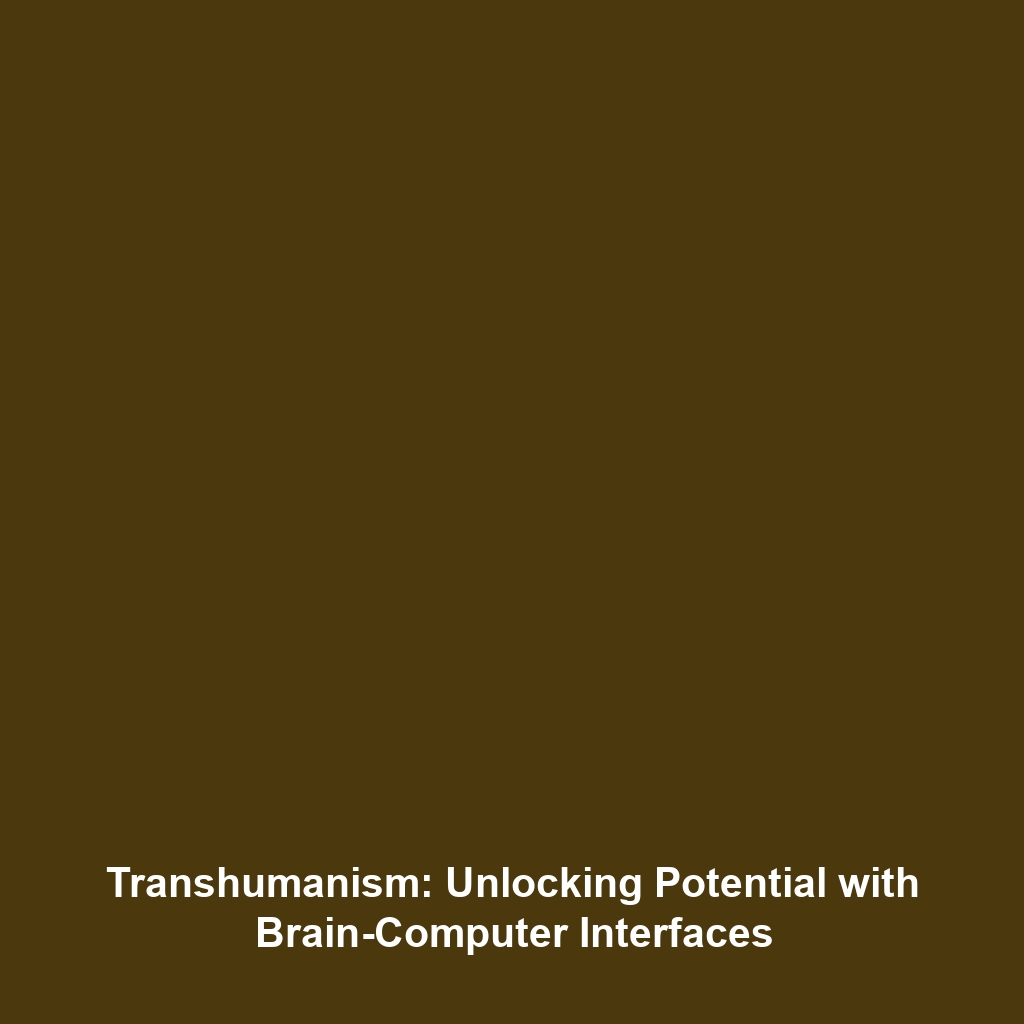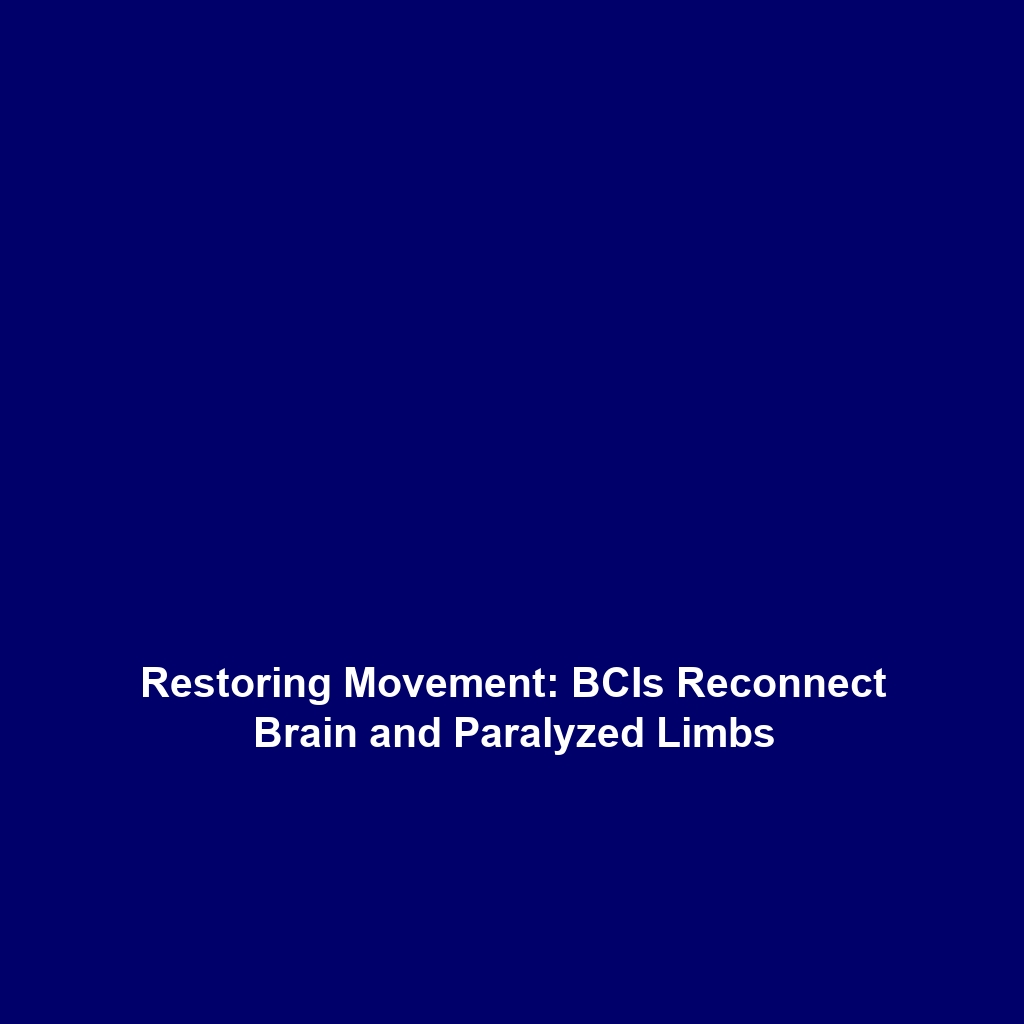What is a Brain-Computer Interface (BCI)?
Introduction
A Brain-Computer Interface (BCI) is a transformative technology that facilitates direct communication between the human brain and external devices. BCIs hold great significance within the field of neuroscience and technology, revolutionizing how we interact with machines. By translating brain signals into commands, BCIs have the potential to enhance the lives of individuals with disabilities and to develop new ways of human-computer interaction. Understanding the fundamentals of BCIs is essential as we explore their profound impact on future technological advancements.
Key Concepts
The core concepts surrounding Brain-Computer Interfaces (BCIs) can be highlighted through the following principles:
Signal Acquisition
BCIs rely on capturing brain activity, typically through methods such as:
- Electroencephalography (EEG)
- Functional Magnetic Resonance Imaging (fMRI)
- Electrocorticography (ECoG)
Signal Processing
Once acquired, brain signals undergo rigorous processing to extract meaningful data, which includes:
- Feature extraction
- Pattern recognition
- Classification algorithms
Device Control
The processed signals are then used to control various applications, demonstrating how BCIs fit into the category of Brain-Computer Interfaces. This control can extend to assistive devices, gaming, and even communication tools.
Applications and Real-World Uses
BCIs have led to significant advances across various fields. Some notable applications include:
- Assistive Technology: Enabling paralyzed individuals to control prosthetics or computers.
- Gaming: Creating immersive gaming experiences that respond to players’ brain activities.
- Neurofeedback: Utilizing BCIs in therapeutic settings to help individuals manage stress and anxiety.
- Research: Investigating neurological conditions by studying brain behavior in real-time.
Current Challenges
Despite their potential, BCIs face a number of challenges:
- Limited accuracy and reliability of brain signal interpretation.
- Ethical concerns regarding privacy and autonomy.
- The complexity of brain signals makes consistent data collection difficult.
- High costs and accessibility issues for advanced BCI technologies.
Future Research and Innovations
Research into Brain-Computer Interfaces is evolving rapidly, with exciting innovations on the horizon:
- Improved algorithms for better signal processing and interpretation.
- Development of non-invasive BCI systems that enhance user comfort.
- Integration of AI to enhance decision-making capabilities based on neural data.
- Exploration of wireless and portable BCIs for broader applications.
Conclusion
In summary, a Brain-Computer Interface (BCI) represents a groundbreaking advancement in the intersection of neuroscience and technology. Its ability to connect the brain with external devices opens vast opportunities for innovation and improvement in quality of life for many individuals. As research progresses and challenges are addressed, BCIs could redefine the scope of human-computer interaction. For further exploration, consider reading more about neurotechnology innovations or learn about neuroscience breakthroughs.






